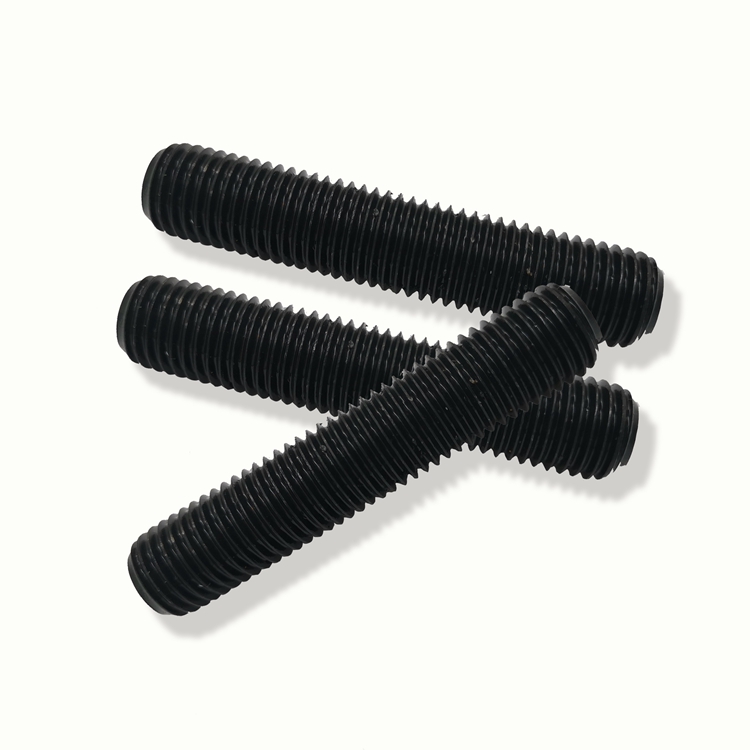Exploring the Versatility and Applications of Button Head Bolts in Modern Engineering Solutions
Aug . 13, 2024 12:36 Back to list
Exploring the Versatility and Applications of Button Head Bolts in Modern Engineering Solutions
The Significance of Button Head Bolts in Engineering and Construction
Button head bolts are a distinct type of fastener characterized by their rounded, dome-like heads, which allow for various applications across engineering and construction sectors. While they may seem like an inconspicuous component, their form and functionality play a vital role in ensuring structural integrity and reliability in building projects, machinery, and innovative designs.
Design and Features
The button head bolt's design is one of its most attractive features. Typically made from materials like stainless steel, carbon steel, or alloys, these bolts offer excellent strength and corrosion resistance. The rounded head not only adds aesthetic value but also provides a larger bearing surface, which helps distribute the load over a wider area. This characteristic is particularly crucial in applications where the bolted connection might be subjected to dynamic or impact loads.
Moreover, the shape of the button head allows for easy installation and removal. The smooth, rounded surface can facilitate adjustments and replacements without the risk of stripping the head, an issue often encountered with other types of fasteners. This ease of use can significantly reduce labor time and improve efficiency on job sites.
Applications in Various Industries
Button head bolts can be found in a wide array of industries, including automotive, aerospace, construction, and manufacturing. In the automotive sector, for instance, these bolts are often utilized in critical components where strength and reliability are paramount, such as engine assemblies and chassis systems. Their ability to withstand vibrations and other mechanical stresses makes them a preferred choice for automotive engineers.
famous buttonhead bolts

In construction, button head bolts are frequently used in structural applications, such as securing steel beams and frames. Their design allows for a clean aesthetic, which is ideal in projects where visible fasteners could disrupt the visual appeal. Furthermore, their corrosion resistance is crucial in outdoor buildings and structures exposed to harsh environmental conditions.
Advantages Over Other Fastener Types
One of the main advantages of button head bolts, compared to traditional hex bolts, is their lower profile. This feature minimizes the likelihood of snagging or interfering with other components, particularly in confined spaces or where aesthetics are a consideration. Additionally, the large contact area of the button head reduces the risk of damage to surfaces, making it a safer option in delicate environments.
The use of button head bolts also contributes to standardization in engineering designs, as they are available in various sizes and grades. This availability allows engineers and designers to select the appropriate bolt that meets the specific requirements of their projects, enhancing both flexibility and performance.
Conclusion
In summary, button head bolts are more than just a mechanical fastener; they are a testament to the ingenuity and practicality of modern engineering. Their innovative design, combined with their wide array of applications, makes them indispensable in various industries. As technology advances and designs become more complex, the demand for reliable and aesthetically pleasing fasteners like button head bolts will continue to grow. Whether in automotive, aerospace, construction, or manufacturing, these fasteners play a crucial role in building a safer and more efficient world. By valuing such components in engineering designs, we not only enhance functionality but also promote innovation in structural integrity and aesthetic appeal.
Latest news
-
Top Wire Bolts Suppliers - Quality & Durable Fasteners
NewsAug.15,2025
-
Trusted Wire Bolts Company | Quality Fasteners Supplier
NewsAug.14,2025
-
Reliable Wire Bolts Suppliers & Manufacturers for Global Needs
NewsAug.13,2025
-
High-Quality Bolts for Lawn Mower Handle Supplier
NewsAug.12,2025
-
Leading Phosphated Drywall Screws Supplier | Bulk & Custom Orders
NewsAug.11,2025
-
Top Wire Bolts Company: Manufacturers, Exporters & Suppliers
NewsAug.10,2025
